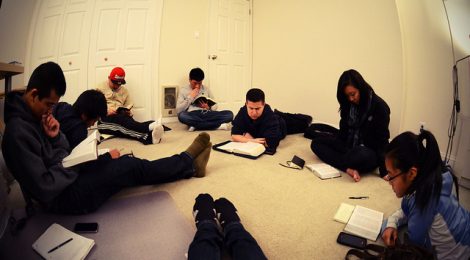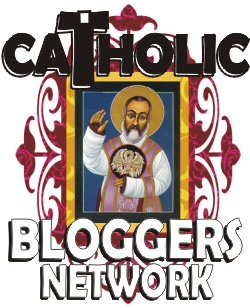
In the Breaking of the Bread, part 2

erinaudreychiu at Flickr
Read Part 1.
So, here we were in a very small community, churchless and friendless. The only person I had known in this town had moved states away. We were a home schooling family, so I did what home schooling families do, and went to the library. There, I was surprised to recognize someone from the Church we used to attend a few years back. Fortunately, she also recognized me, because I am introverted and tend to feel quite socially awkward. While chatting, we discovered that our duplex was just across the back alley from her home. Little did we know that we would play a significant part of our faith journeys, but I believe the Lord set us up that way!
I guess I can be a contemplative sort. I don’t like to do a thing without weighing it against Scripture and the Truth as I understand it. So, the decision to home church was not taken lightly. A huge complication was that we were undertaking this endeavor alone, so we were not able to join with other brothers and sisters in the faith. My new friend, our neighbor, learned of my seeking and pointed out a home church community within our small town and invited us to try it. We nervously showed up at the Knights of Columbus Hall that they used for a meeting space. Their understanding and expression of the faith was far out of my husband’s comfort zone, and a bit out of mine as well, so we didn’t return.
Being across the alley, and both home schooling families, we had plenty of opportunity to socialize together. My neighbor was as passionate about faith as I am, and so we would engage in deep theological conversations and share our struggles with finding a theology that mirrored our interpretation of Scriptures and our personal experiences. Something about this approach didn’t set right with me, however. My friend had a large volume on comparative theology of various protestant Christian denominations which she loaned to me. I thumbed through it, but felt very lost and confused. As I examined Scripture, particularly the Proverbs, I found admonishments against relying on my own understanding. This advice was repeated enough times, that I really felt it significant. Would God really want me to pick and choose among all the various interpretations of Scripture evidenced in the multitude of denominations, just to find one that resonated, or at least which most closely resembled what I felt the Holy Spirit had revealed?
There was the sticking point. If God is one, and the Holy Spirit was sent to lead us to all truth, why were there 35,678 Christian denominations? There was just something off about this whole picture. Confusion and division are not fruits of the Spirit. Somewhere in all of this was an answer. Christ promised a beacon on a hill. So the answer should be clear, and not require sifting through a mound of theology texts and comparative religion studies. Christ came for all peoples, (my friends’ TULIP notwithstanding) including the ignorant, the uneducated, the illiterate. Although we protestants like to endorse intellectual, “study to show thyself approved” faith, Christ loves us more than that. I began to see my whole faith journey through a different lens. Christ himself placed himself in a position of submission. Paul called believers to a role of submission (and not just wives.) The opposite of division is submission. So I began to investigate denominations from the point of submission, “to which Church could I submit?”
Continue reading Part 3.

[…] If you missed the others, here are part 1 and part 2. […]
[…] reading Part 2. Share this:TwitterFacebookLike this:LikeBe the first to like this post. Categories: Reflection […]
[…] you missed the others, here are part 1 and part 2 and part […]